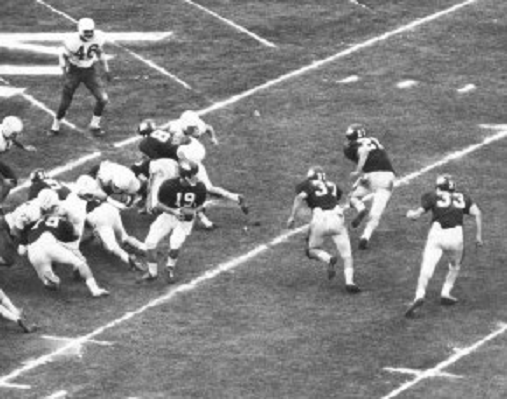


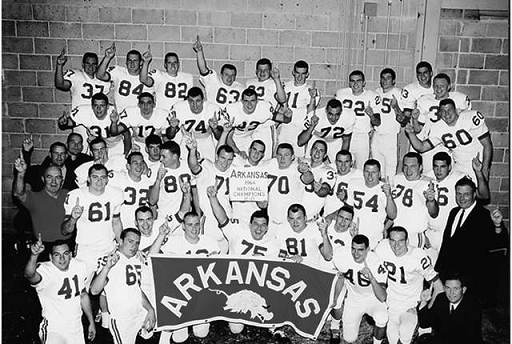
| Oklahoma State (4-6) | 14-10 | |
| Tulsa (9-2) | 31-22 | #19 |
| at Texas Christian (4-6) | 29-6 | |
| Baylor (5-5) | 17-6 | |
| at Texas (10-1) | 14-13 | #2 |
| Wichita State (4-6) | 17-0 | |
| at Texas A&M (1-9) | 17-0 | |
| Rice (4-5-1) | 21-0 | |
| Southern Methodist (1-9) | 44-0 | |
| at Texas Tech (6-4-1) | 17-0 | |
| Cotton Bowl Nebraska (9-2) | 10-7 | #6 |
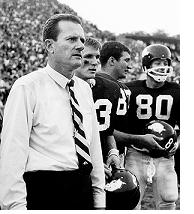 The head coach at Arkansas was Hall of Famer Frank Broyles (pictured at left), easily
the greatest coach in school history. He had played quarterback for
Georgia Tech 1944-1946, and had been the SEC player of the year in
1944. After one year coaching Missouri in 1957, he moved on to
Arkansas, and stuck around for nearly 50 years, first as coach, then as
athletic director. He was the head coach 1958-1976, going 144-58-5 and
winning 7 SWC titles, and he was the AD 1974-2007.
The head coach at Arkansas was Hall of Famer Frank Broyles (pictured at left), easily
the greatest coach in school history. He had played quarterback for
Georgia Tech 1944-1946, and had been the SEC player of the year in
1944. After one year coaching Missouri in 1957, he moved on to
Arkansas, and stuck around for nearly 50 years, first as coach, then as
athletic director. He was the head coach 1958-1976, going 144-58-5 and
winning 7 SWC titles, and he was the AD 1974-2007.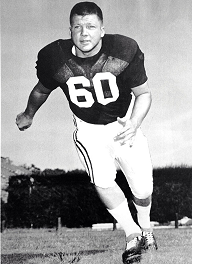
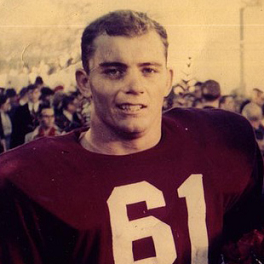
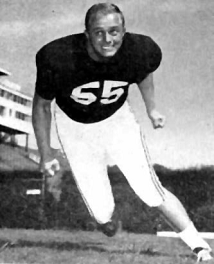
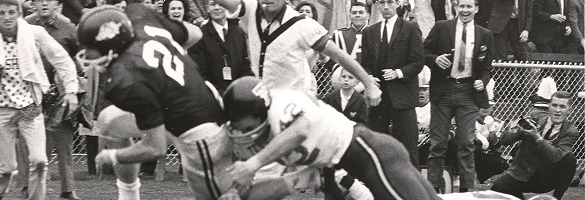
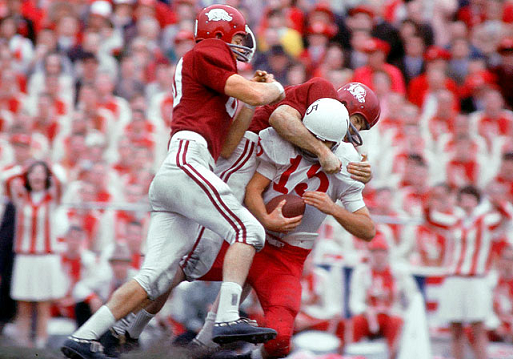
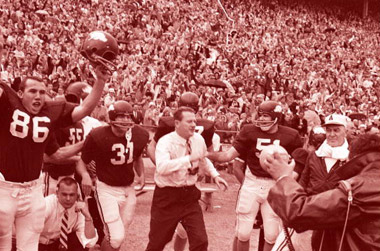
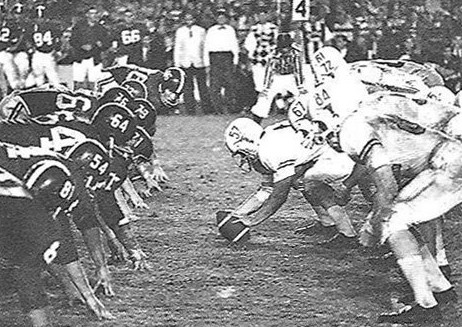
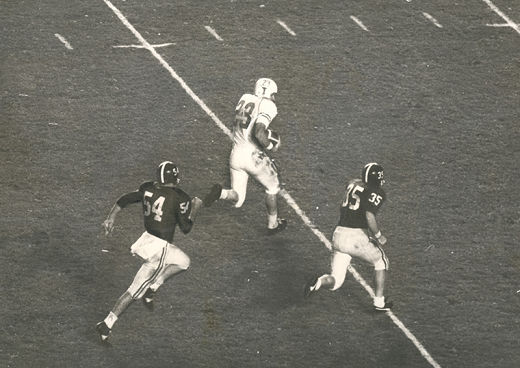
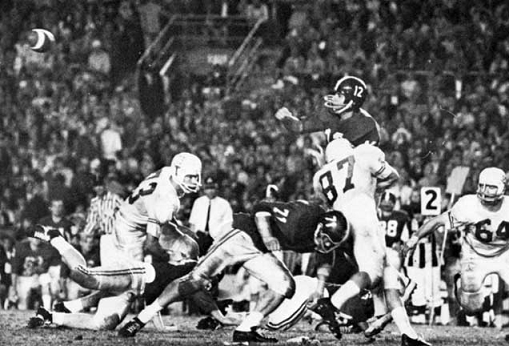
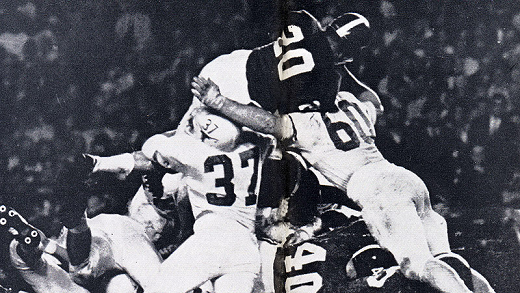
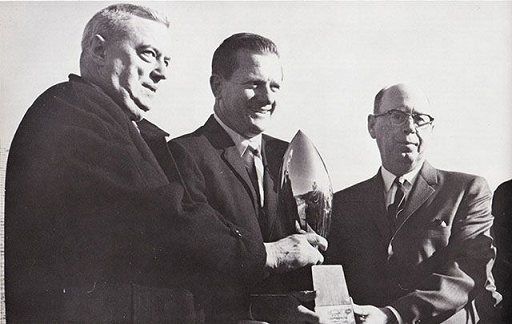
| 1) National Championship Foundation | 4.69 |
| 2) Billingsley (math system) | 4.67 |
| 3) Houlgate (math) | 4.53 |
| 4)
College
Football Researchers Association |
4.48 |
| 5) Sagarin-ELO (math) | 4.46 |
| 6) DeVold
(math) | 4.44 |
| 7) Poling
(math) |
4.38 |
| 8) Helms Foundation | 4.35 |
| 9) Boand (math) | 4.27 |
| 10) Sagarin (math) | 4.24 |
| 11) Litkenhous
(math) | 4.22 |
| 12) AP Poll | 4.08 |
| 13) Dunkel (math) | 4.05 |
| 14) Williamson (math) | 3.86 |
| 15) Berryman (math) | 3.17 |
| 16) Coaches Poll | 3.05 |
| 1) Boand (math system) | 4.26 |
| 2) College Football Researchers Association | 4.22 |
| 3) Poling (math) | 4.11 |
| 4) Helms | 4.09 |
| 5) Sagarin-ELO (math) | 4.06 |
| 6) National Championship Foundation | 3.96 |
| 7) Dickinson (math) | 3.49 |
| 8) Houlgate (math) | 3.35 |
| 9) Billingsley (math) | 3.34 |
| 10) Sagarin (math) | 3.28 |
| 11) Parke Davis | 2.77 |
| 1) Houlgate (math system) | 4.5 |
| 2) Helms | 4.3 |
| 3) Parke Davis | 4.2 |
| 4) National Championship Foundation | 3.7 |
| 5) Billingsley (math) | 3.6 |